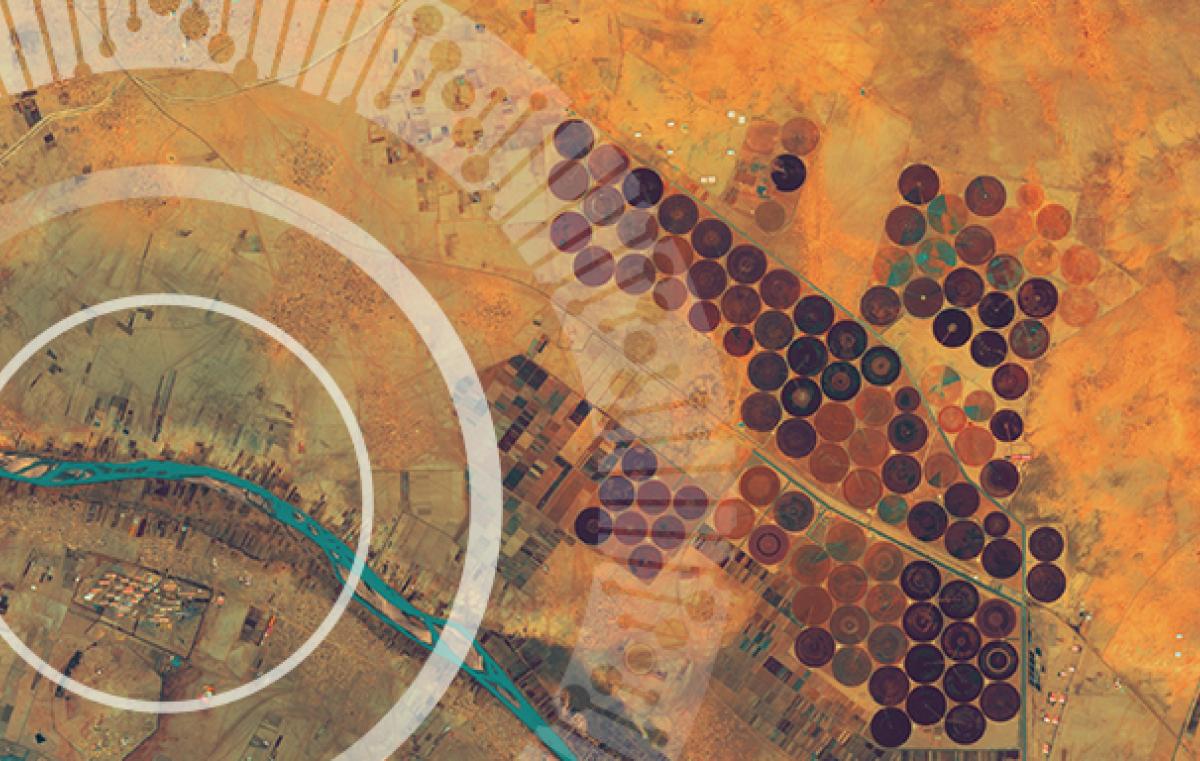Using Satellites to Grow Wheat
Researchers have developed tools that use soil temperature data collected by satellites to improve crop yield

With climate change, a decline in farmland, and population growth, now more than ever is there a need to optimize yield from existing agricultural land. Researchers who understand that micro-climatic variability exists even in adjacent fields and that it is wise to consider the agronomic data of optimal conditions required for different wheat varieties, have launched a new study. Their research utilizes satellite data to help farmers create the best mix between the wheat varieties they grow, the timing of sowing and the designated plot of land.
Wheat crops are very significant in Israel and cover an area of about one million dunams (about 250,000 acres). They include many varieties, which differ in production of grains crops and quality. The growing conditions greatly affect both the production and the quality of each variety. Through an app developed by Shilo Shiff (as a chapter in his doctoral dissertation) and Prof. Itamar Lensky of Bar-Ilan University’s Department of Geography and Environment, together with Dr. David Bonfil of the Volcani Institute, farmers will be able to manipulate the factors under their control to circumvent as much as possible the climatic barrier and obtain improved crop yields and quality.
Different climatic conditions during the grain-filling period are a major factor affecting the wheat crop and its quality. The cause of climatic spatial variability is mainly the topography and land cover in the field. Wheat crops in semi-arid areas, common in Israel, are subject to high temperatures and the heat stress they cause during the ripening period. This study, published in the scientific journal, “Remote Sensing”, contends that remote sensing – that is satellite data – can be used to monitor both crop development and soil temperature. The researchers developed a tool for optimizing field management in terms of wheat variety selection and sowing times.
For the research, data about wheat varieties from 155 studies conducted in Israel were analyzed. The data revealed how many “Degree Days”, that is how many degrees (above a certain threshold value) accrue each day, are required for each development stage of each wheat variety.
The researchers developed a Google Earth Engine (GEE) app that by changing the wheat variety and/or the day of the sowing in the application, the farmer can expose the wheat in his field to different climatic conditions during the grain-filling period of the crops. The tool allows farmers to estimate in advance the expected grain-filling period and thus select for each field the appropriate variety and the sowing date to reduce chances that the wheat will be exposed to heat waves that may damage the crop.
With the climatic changes we experience every day, this app can also be used to assess the impact of different global warming scenarios and to plan adaptation strategies in Israel and other regions as well.
An earlier study, whose findings constituted the basis for creating the GEE app for farmers, was also conducted by Shiff and Lensky, along with Dr. David Helman of the Hebrew University. The study’s aim was to create continuous time series of satellite data for purposes such as those described above, to optimize wheat cultivation. The researchers filled in missing temperature data (mainly due to clouds) using a combination of satellite observations and data from a weather forecasting model. The information obtained from observations of wheat cultivation in different growing areas in Israel and by different observers successfully verified this model.
Other uses in agriculture for time series of surface temperature are predictors for different field crops other than wheat, predictors of pest development to determine plant protection strategies, predictors of the “chilling requirement” for deciduous fruit trees flowering and fruit set. In fact, almost every agronomic aspect is affected by temperature, so this app has great potential in additional directions that require further research.